Pure maths key facts (AS)
1/64
There's no tags or description
Looks like no tags are added yet.
Name | Mastery | Learn | Test | Matching | Spaced |
|---|
No study sessions yet.
65 Terms
A tangent to a circle is…
Perpendicular to the radius
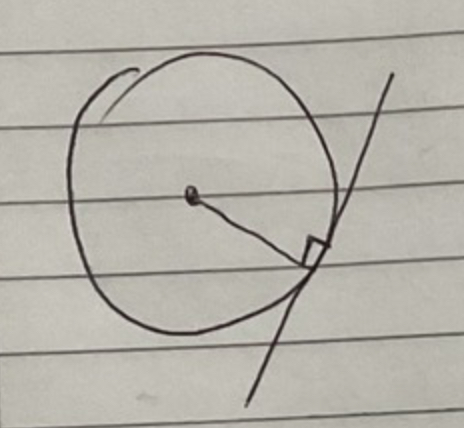
An angle inscribed in a semicircle is a…
Right angle/90°
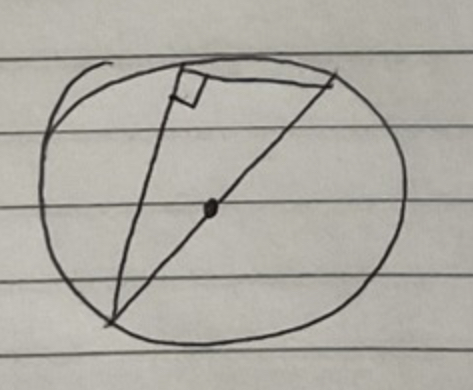
How do you go about proving that an angle is 90°?
You could look at the gradients of the two lines that meet to create the 90° angle.
Perpendicular lines' gradients multiply to give -1.
A perpendicular bisector of a chord…
Passes through the centre of the circle
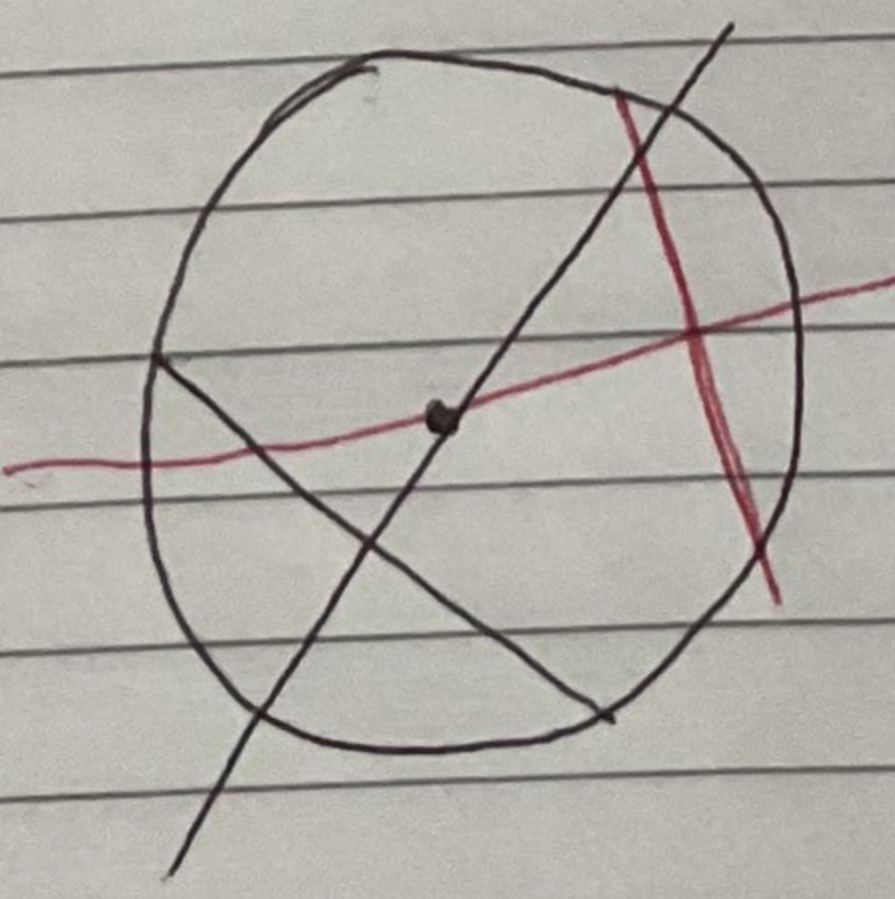
Two perpendicular bisectors of a chord…
Meet at the centre of the circle
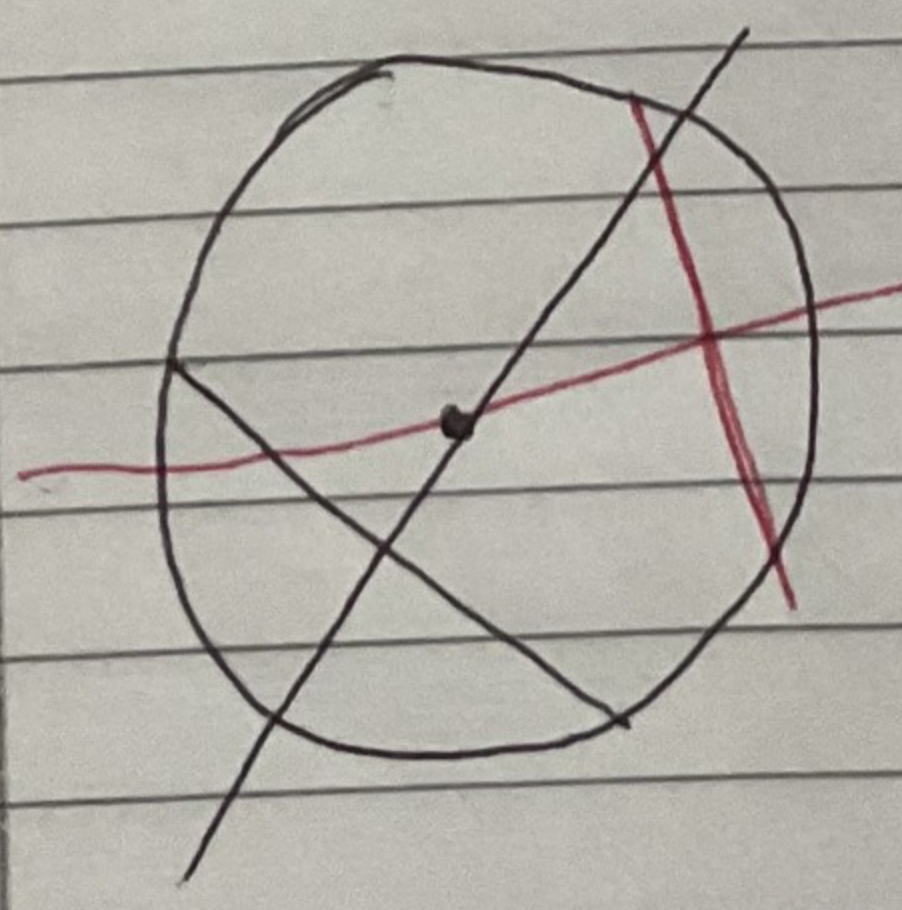
Equation of a circle
(x-h)²+(y-k)²=r²
What two things do you need to find the equation of a circle?
- Coordinates of the centre
- Length of the radius
How do you find the length of a line on the circle (e.g. the diameter, radius, a chord, etc), given two points?
- Draw on a right-angle triangle that connects the two points
- Find the difference between the y values and x values to find the length of a and b
- Find c using Pythagoras
- Square root c
Note: if finding a radius, make sure to half the final value.
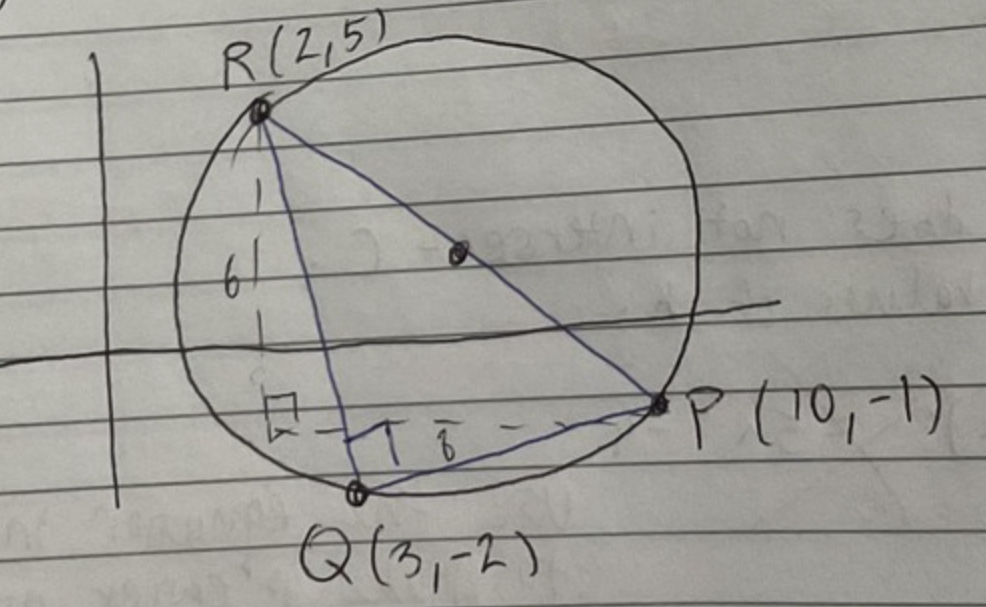
Chapter 7
Chapter 7
When finding the remainder, what do you do? Example equation = x³ + 10x² + 5 / x + 2
- In the final box, there is -48 left.
- You take away 5 from -48.
- 5- -48 = 53. The remainder is 53.
- Remember: original final number - final number in the box
if f(p) = 0, then…
(x-p) is a factor of f(x)
When using the factor theorem, you must state…what?
"…Hence, by the factor theorem"
When proving that something is divisible using the factor theorem, you must say… (Example: prove that 2x… is divisible by (x-1))
"If divisible by (x-1), then f(1) will equal 0"
Chapter 7b
Chapter 7b
Proof by deduction
- Starting from known facts or definitions, then using logical steps to reach the desired conclusion.
- Example: using 2n for even numbers, 2n+1 for odd numbers
Proof by exhaustion
Breaking the statement into smaller cases and proving each case separately.
Disproof by Counterexample
Using an example to disprove a statement — basically, an incorrect example that doesn't fit the hypothesis.
When finishing a proof question, write:
Hence, (repeat the statement)
Exam tip
'do something' to get started - be it factorising, combining two fractions, expanding, etc.
Also consider using even and odd numbers.
Chapter 8
Chapter 8
n choose r
n!
———
r!(n-r)!
Chapter 9
Chapter 9
What is the cosine rule?
a² = b² + c² - 2bcCosA (for finding sides)
cos A = b² + c² - a² / 2bc (for finding angles)

When do you use the cosine rule?
when you see an angle sandwiched between 2 known sides
when you are given all three sides
(No known opposites)
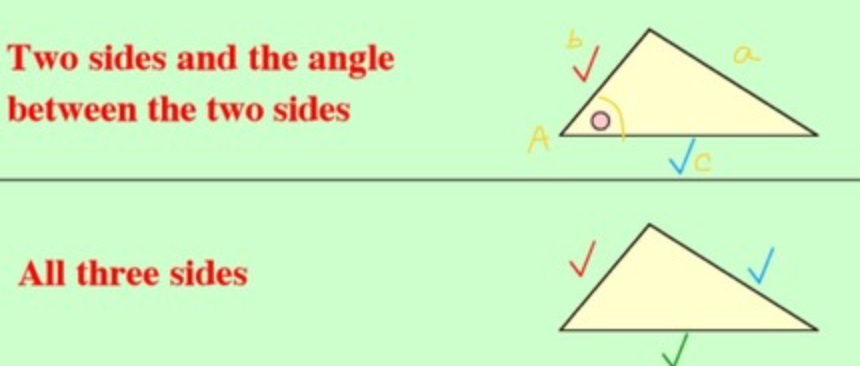
What is the sine rule?
a/sin A = b/sin B = c/sin C (for finding sides)
sin A/a = sin B/b = sin C/c (for finding angles)

When do you use the sine rule?
- when given 2 sides and an angle
- when given 2 angles and a side
One pair of opposites

Sine rule ambiguous case
When given that the angle is obtuse, you have to take away your found angle from 180°.
What is the sine rule for area?
Area = 1/2 abSinC
- when you see an angle sandwiched by both sides (no opposites)

Sine graph
sinx = sin(180-x)
starts at 0
crosses the x axis at = 0, 180, 360, 540
repeats itself every 360° (positive and negative part)
"leads" a cos graph by 90 degrees
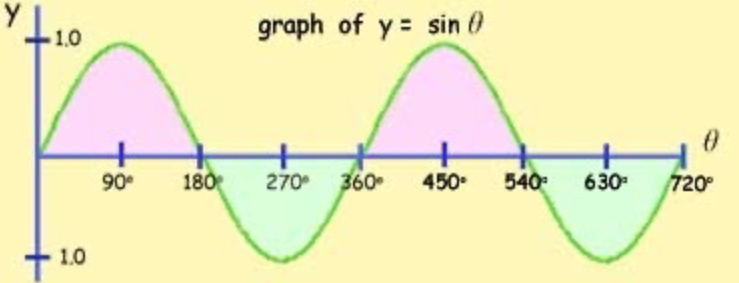
Cosine graph
cosx = cos(360-x)
starts at 1
crosses the x axis at = -90, 90, 270, 450
repeats itself every 360° (positive and negative part)
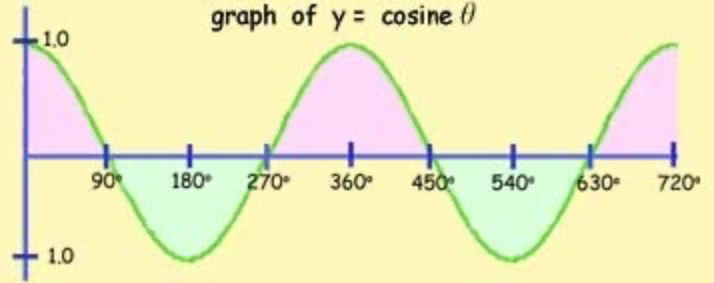
Tangent graph
- y=tanx
- repeats every 180°
- crosses the X axis at -180, 0, 180, 360
- no max + min values
- vertical asymptotes= -90, 90, 270
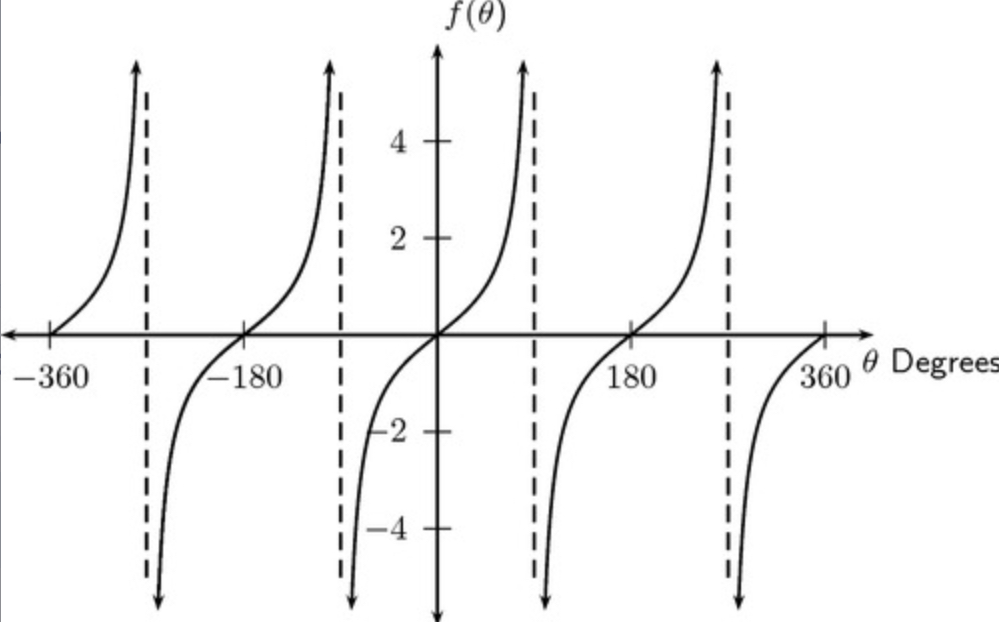
sin 0°
0
cos 0°
1
tan 0°
0
sin 90°
1
cos 90°
0
tan 90°
undefined
sin 45°
1/√2 or √2/2
cos 45°
1/√2 or √2/2
tan 45°
1
sin 30°
1/2
cos 30°
√3/2
tan 30°
1/√3 or √3/3
sin 60°
√3/2
cos 60°
1/2
tan 60°
√3
Chapter 10
Chapter 10
tanθ =
sin θ/cos θ
sin²θ+cos²θ=
1
The cosine function
sinθ = cos(90-θ)
cosθ = sin(90-θ)
Solving equations with sinθ
First, find the starting two angles: θ and (180-θ). Then add or subtract 360° as needed.
Solving equations with cosθ
First, find the starting two angles: θ and (360-θ). Then add or subtract 360° as needed.
Solving equations with tanθ
First, find the starting angle, θ. Then add or subtract 180° as needed.
Equations with linear inputs - expression inside the bracket
Change the range
Solve for new range first
Solve these answers for x/θ/etc.
If given a mixture of sin/cos/tan, then convert them into one thing and try to get just one of the three. (Example: divide sin(2x-20) by cos(2x-20) to get tan(2x-20)).
Chapter 11
Chapter 11
AB position vector
= AO + OB
= b - a
unit vector of a
(1/|a|)a
A unit vector in the direction of a = 3i + 4j
Magnitude = 5
Unit vector = 3/5i + 4/5j
Chapter 12
Chapter 12
Volume of a cylinder
V=πr²h
Volume of a sphere
4/3πr³
Volume of any prism
Area of cross section x length
Chapter 14
Chapter 14
Differentiate 3e^2x
6e^2x
What things do you need to think about when transforming an exponential graph?
SYA
- Shape
- y-intercept
- asymptotes